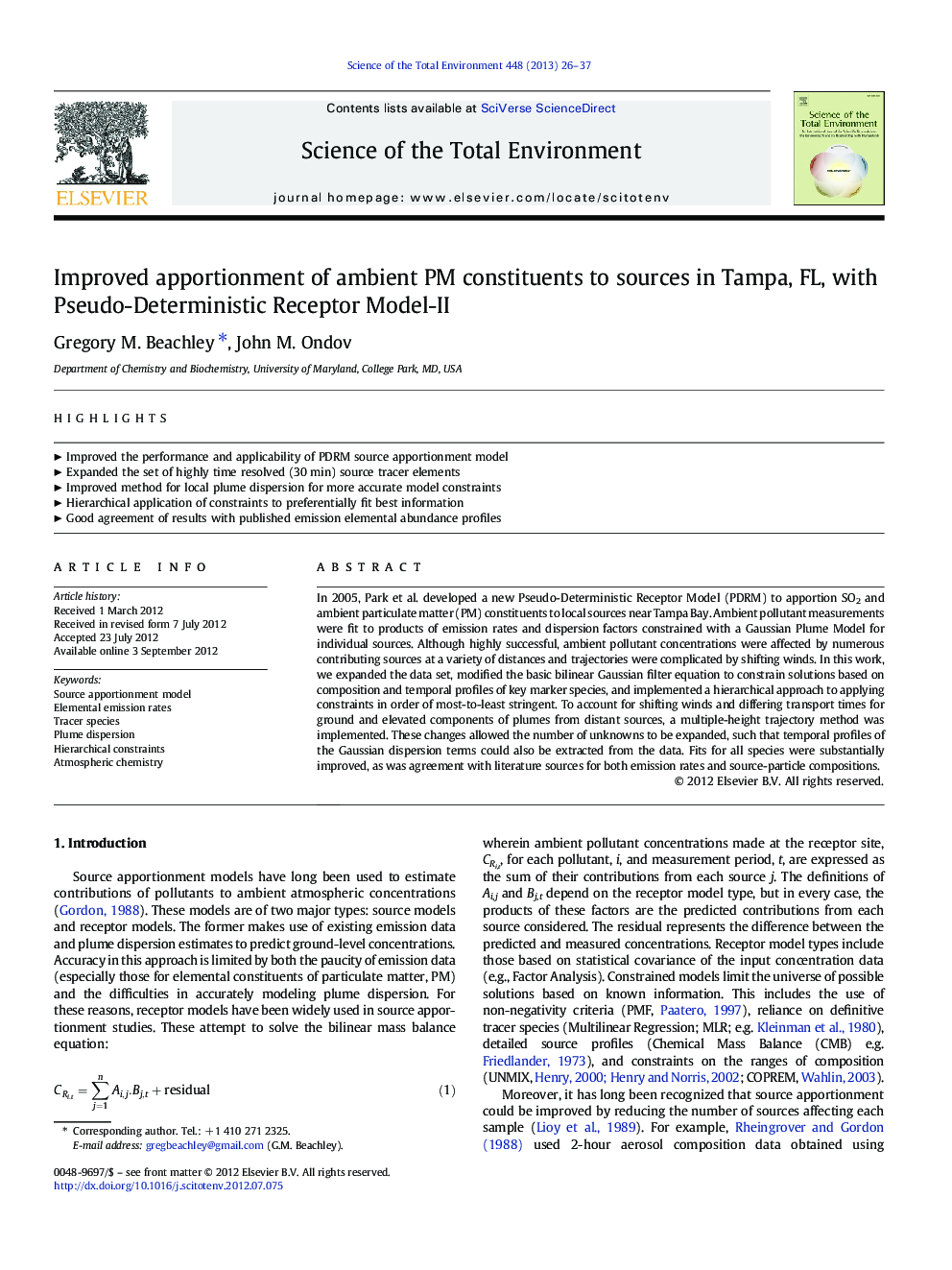| Article ID | Journal | Published Year | Pages | File Type |
|---|---|---|---|---|
| 4428897 | Science of The Total Environment | 2013 | 12 Pages |
In 2005, Park et al. developed a new Pseudo-Deterministic Receptor Model (PDRM) to apportion SO2 and ambient particulate matter (PM) constituents to local sources near Tampa Bay. Ambient pollutant measurements were fit to products of emission rates and dispersion factors constrained with a Gaussian Plume Model for individual sources. Although highly successful, ambient pollutant concentrations were affected by numerous contributing sources at a variety of distances and trajectories were complicated by shifting winds. In this work, we expanded the data set, modified the basic bilinear Gaussian filter equation to constrain solutions based on composition and temporal profiles of key marker species, and implemented a hierarchical approach to applying constraints in order of most-to-least stringent. To account for shifting winds and differing transport times for ground and elevated components of plumes from distant sources, a multiple-height trajectory method was implemented. These changes allowed the number of unknowns to be expanded, such that temporal profiles of the Gaussian dispersion terms could also be extracted from the data. Fits for all species were substantially improved, as was agreement with literature sources for both emission rates and source-particle compositions.
► Improved the performance and applicability of PDRM source apportionment model ► Expanded the set of highly time resolved (30 min) source tracer elements ► Improved method for local plume dispersion for more accurate model constraints ► Hierarchical application of constraints to preferentially fit best information ► Good agreement of results with published emission elemental abundance profiles
